National Geographic Visits the Land of Ooze
ó 21 September 2002
A team from National Geographic visited the Land of Ooze this last week. At the suggestion of Bob Prescott, director of Mass Audubonís Wellfleet Bay Wildlife Sanctuary, they came out for morning hatchling rounds on Saturday, 21 September. Videographer, sound men and women, and several still photographers crossed the Lieutenant Island causeway to join our twice daily patrol of this rich nesting site and nursery habitat. On our side we invited members of the Paludal Posse, researchers and residents, to come along for the fun and adventure.
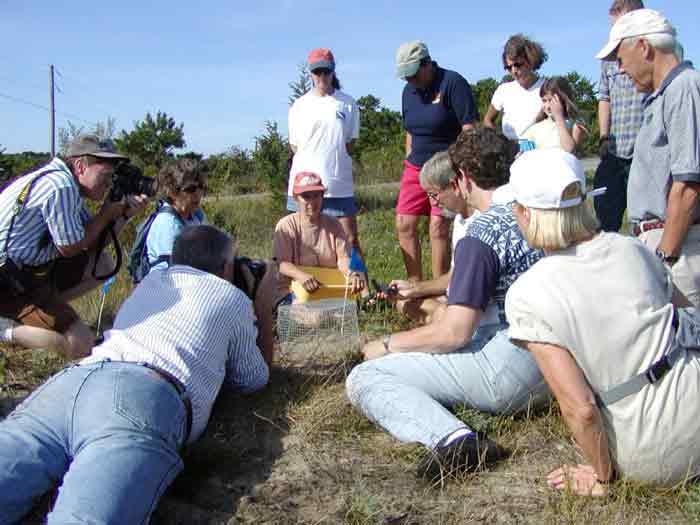
Now these events always seem effortlessly successful as evidenced by every nature show youíve watch on TV. Effortless, that is, so long as you donít look behind the magicianís curtain. But in the Terrapin Diary, we let down our guard a bit to reveal the reality behind the veneer.
September is hatchling time, but to make sure that the National Geographic audience had a chance to meet the whole family of terrapins, I launched my kayak into Blackfish Creek at 0400 the morning previous. I hoped to capture an adult for the camera. Yes, it was pitch black. Yes, the water had already begun to chill. Yes, terrapins arenít very active in the dark and the cold. But the moon was setting into Cape Cod Bay, and the Milky Way shown glorious above, and the water was flat calm except for the rush of the ebbing tide. It truly doesnít get much better than this.
With low intensity lamp mounted on my forehead, I paddled through the gushing channel and spotted three turtles. As luck would have it, and chance does favor the prepared mind, I was able to net them all, one at a time. And each one proved a perfect specimen for the morning shoot.
Terrapin #744 (left) is a fully mature, 15-year-old female who nests right in the area where we visited with National Geographic. Turtle #1772 (right) is a fully mature, 10-year-old male. This couple well demonstrated the pronounced gender dimorphism of diamondback terrapins.

Terrapin #1185 (top) is a pre-pubescent, 7-year-old female. With almost identical linear measurements as mature male #1772 (bottom), she provided the perfect model to demonstrate how one can distinguish males and females based on secondary gender characteristics, such as the “shallowness” of males and the “depth” of females. Iím talking about shell girth, of course.

Of course, the clear growth lines on the juvenile illustrated how we determine the age and lifespan of turtles. Unworn by time and weather, she also highlighted the trademark “diamond” facets on her carapace that give the species its name.
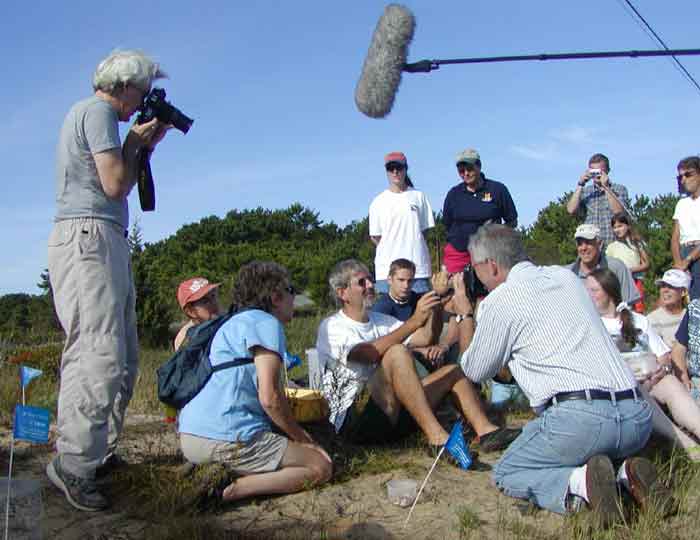
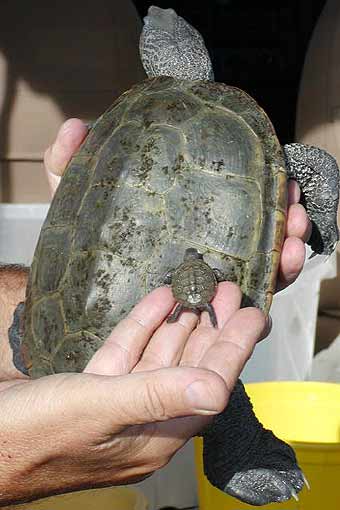 |
 |
Still, everyone really came for the hatchlings. So the comparison of a mature female and a just-hatched baby, although an unnatural photo op, couldnít be resisted by camera bugs, professionals and amateurs alike. For the record, Terrapin #744 measures almost 19 centimeters long and weighs 1260 grams. The hatchling measures 2.8 centimeters and weighs 6 grams.
Luckily, there were lots of hatchlings to be seen and photographed. We released three dozen that had been rescued from nests under attack by fly maggots. We also found four nests in the process of hatching, three of which had been protected by predator excluders and the other a surprise nest in the middle of Marsh Road. |

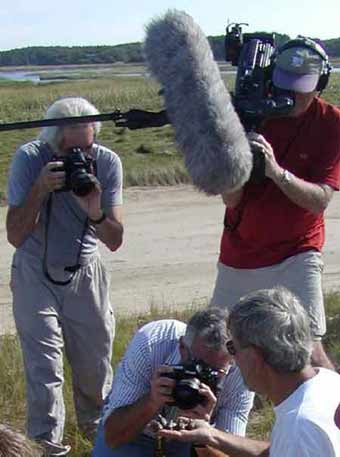 |
 |
The last stop on morning rounds was a nest at the tip of . . . appropriately named . . . Turtle Point. Nest 178 had been laid on the evening of 8 July by Terrapin 650 in the west tire tracks of Lieutenant Islandís 5th Avenue. She had deposited 11 eggs, one of which had been broken in the hard-packed soil as she re-buried the nest. They weighed 93 grams in all. The 10 viable eggs were harvested and relocated to Turtle Point because the initial location was extremely vulnerable to summer traffic. As shown below scrambling for freedom, all 10 hatchlings emerged in perfect shape. They ranged in size from 2.7 to 2.89 centimeters long and in weight from 5.5 to 6.6 grams. |

Special thanks to Elizabeth Hogan, who provided the photographs for todayís diary entry, including this exquisite shot of a just emerged hatchling.
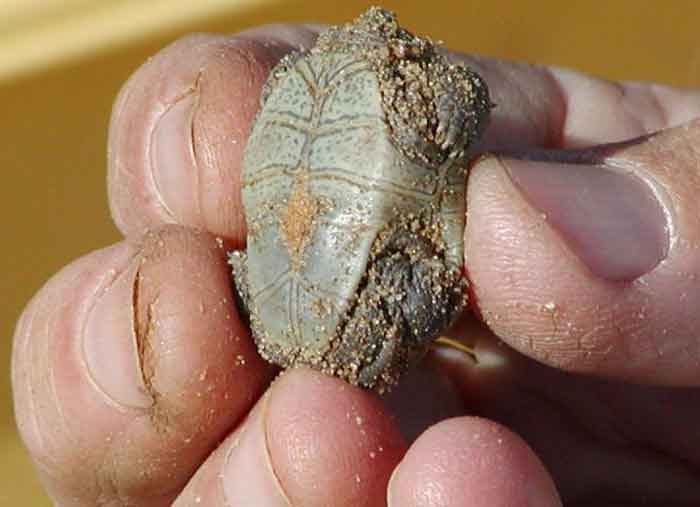
|